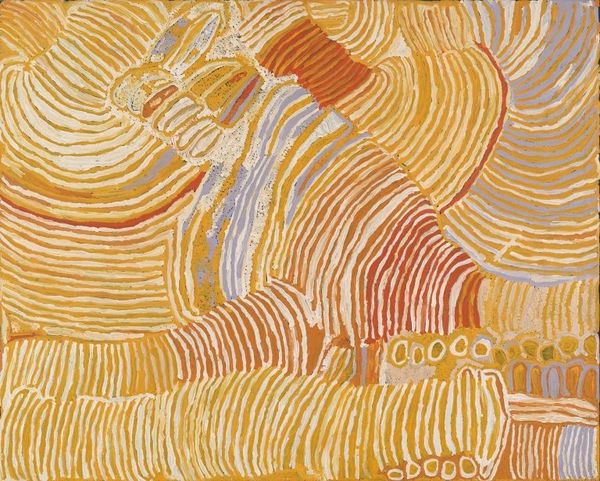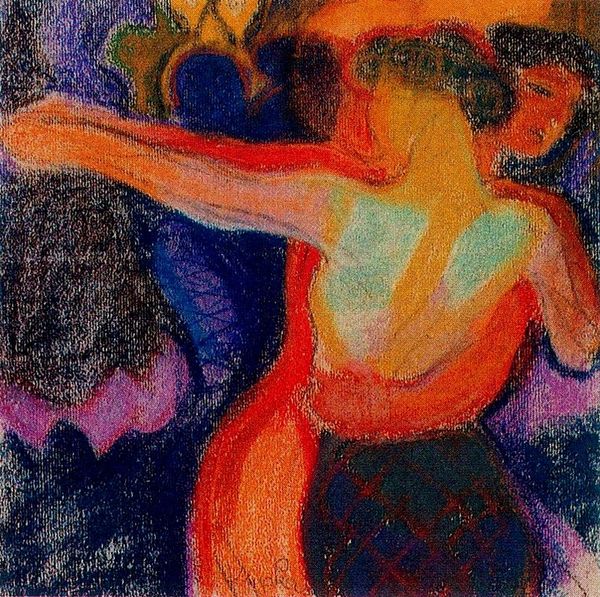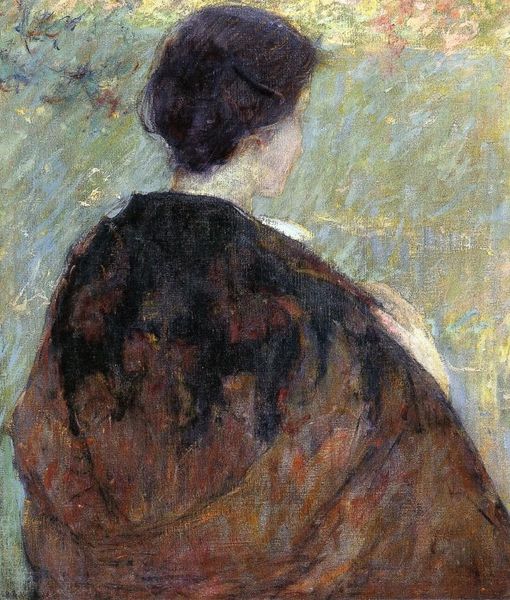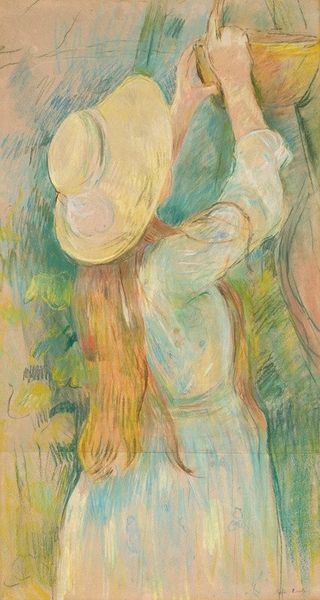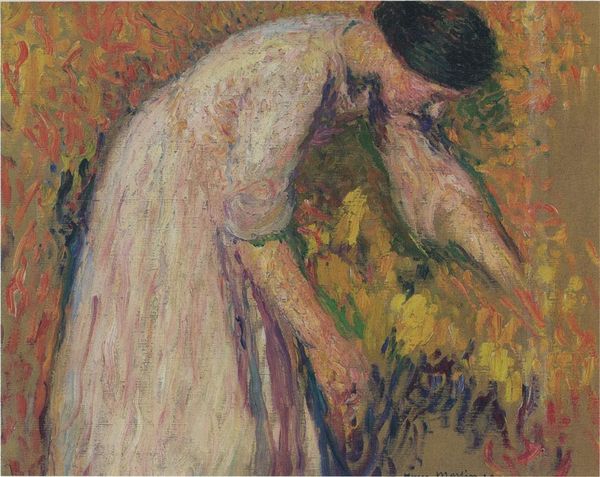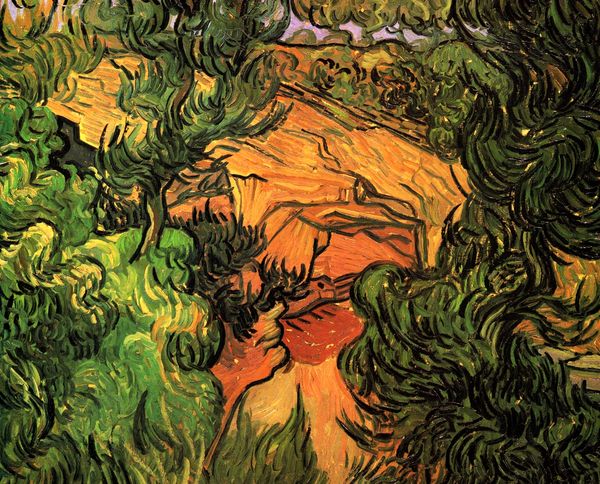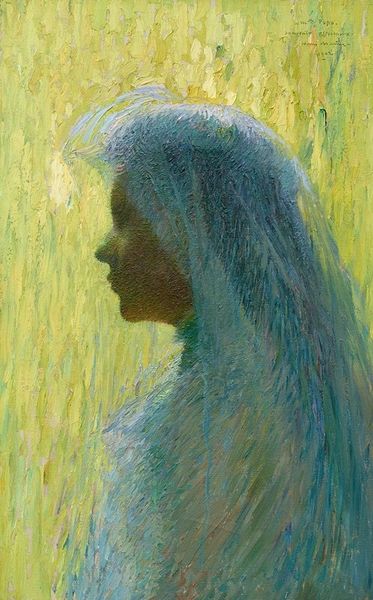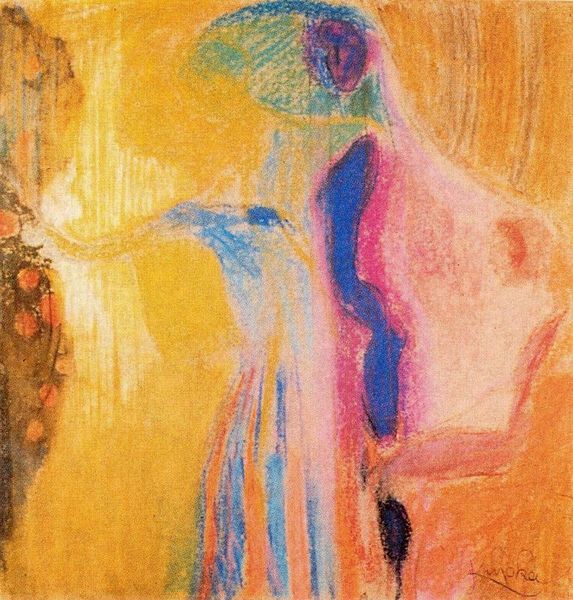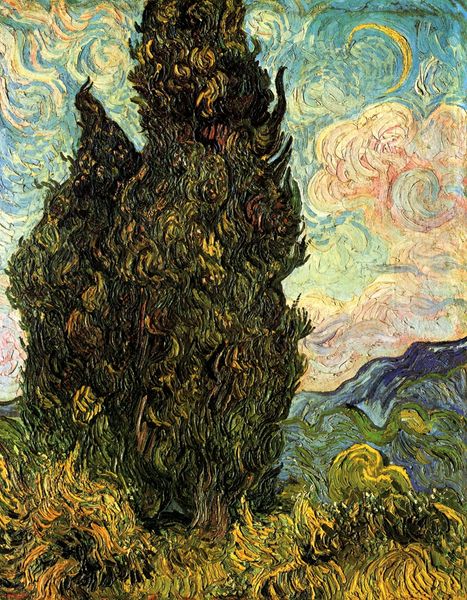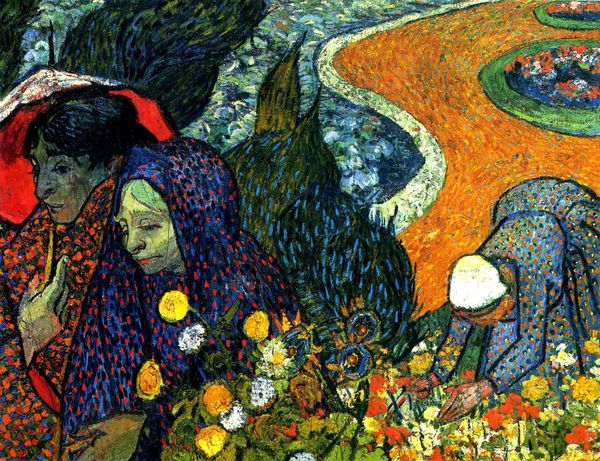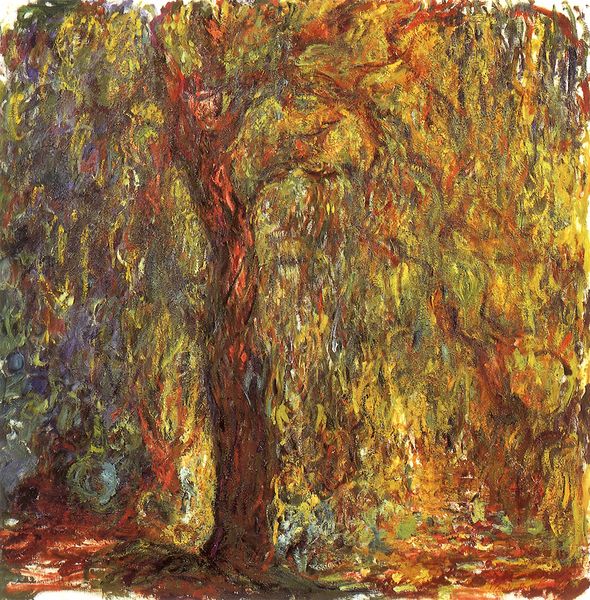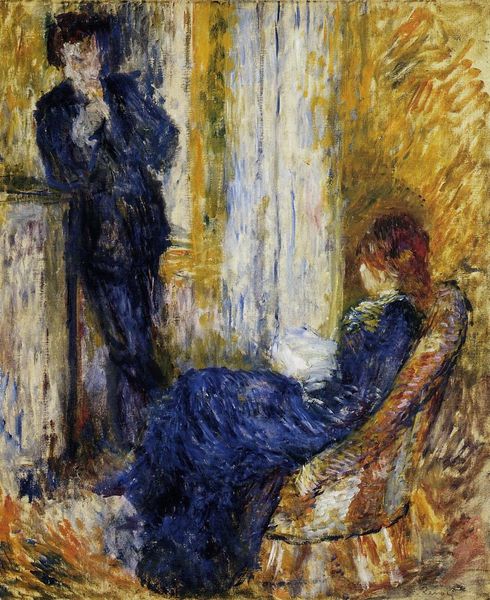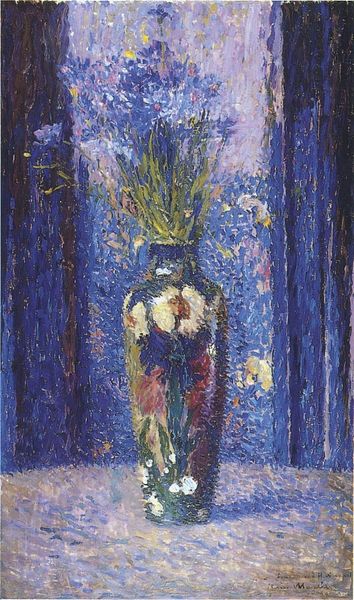
painting, oil-paint
#
portrait
#
painting
#
oil-paint
#
figuration
#
geometric
#
futurism
Copyright: Public domain
Curator: Standing here, the overwhelming feeling is one of dizzying sensation, as the brushstrokes swirl. Art Historian: That's an apt description of Luigi Russolo's painting, "Perfume," created in 1910. This oil on canvas exemplifies the burgeoning Futurist movement in Italy. Curator: The application of the oil paint itself—it’s fascinating. See how he’s used these quick, divided strokes? Almost pointillist but with less discipline, more energy. He must have wanted to capture something ephemeral, something felt rather than seen. What can you tell me about its socio-political context? Art Historian: Well, Futurism, was deeply invested in representing the dynamism of the modern world. Russolo and his Futurist contemporaries embraced technology, speed, and industry while rejecting the artistic traditions of the past. Curator: And how is that rejection playing out here in terms of material culture? We have the subject, this abstracted figure inhaling, overwhelmed perhaps – but it's the act of *making* that grabs me. Oil paint wasn’t new, of course, but using it to evoke something so intangible, so completely *modern*...that’s key. Art Historian: Precisely! The Futurist manifestos were calls to arms, arguing that art should be a vital force within society, reflecting and even driving its transformations. "Perfume" aligns perfectly with this ideal, turning sensory experience into something almost mechanized through the brushwork. Curator: I notice the almost industrial palette: ochre yellows with those striking indigos and blues, hinting at factories, movement, smoke perhaps... It's far from the idealized landscapes and portraiture the old academies favored. The title further reinforces this sensory experience of the world, filtered through industry. Art Historian: The futurists had the ambition to visualize new sensation and a brave approach of synesthesia that allows painting the scent…It challenged not only artistic conventions but also societal norms around taste and the very definition of beauty. Curator: Looking at this "Perfume" painting, it is incredible to note its modern view through its raw materials and focus on modern society's impact in its canvas production. Art Historian: Seeing how Russolo's captured sensory and emotion through movement is revolutionary from a historical context. Curator: Thank you for guiding the perspective on materials' contribution.
Comments
No comments
Be the first to comment and join the conversation on the ultimate creative platform.
